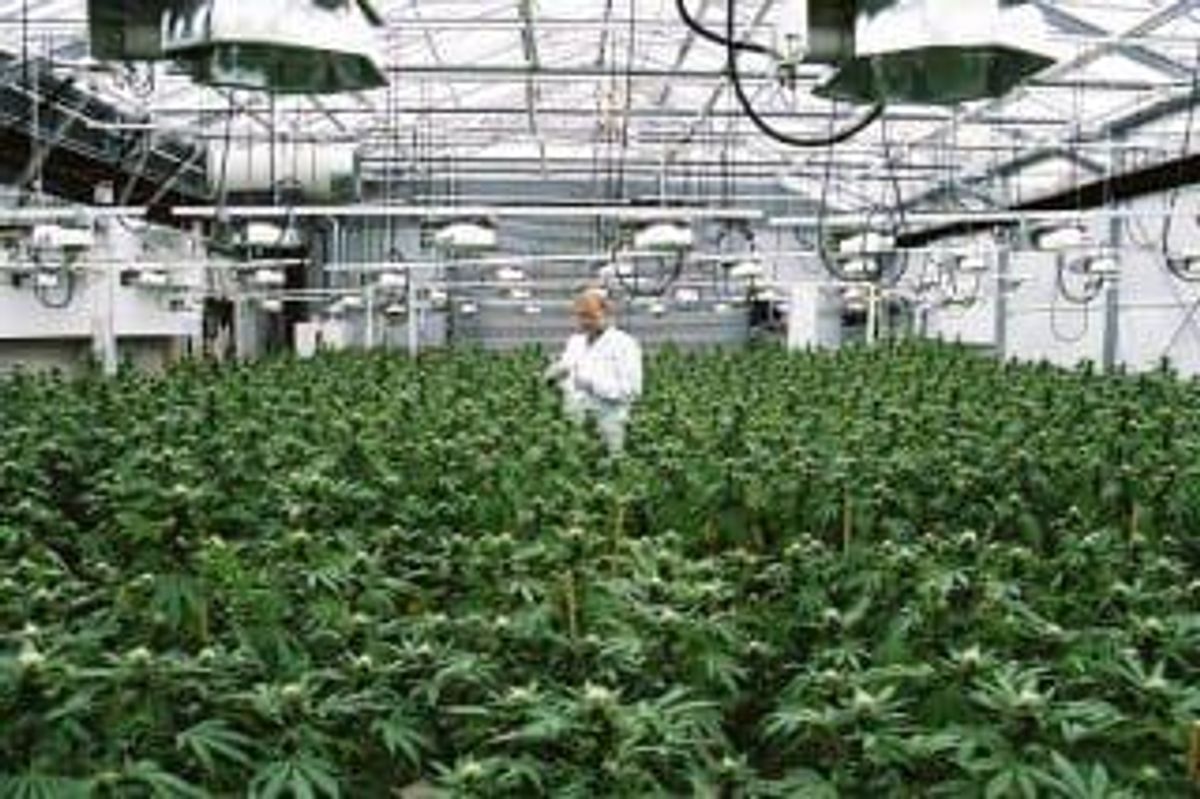Cannabis Companies Using 'Good Bugs' to Protect Plants from Pests

A lack of pesticide regulations for medical cannabis has companies like Bedrocan opting for safer alternatives.
Using safe pesticides to grow fruits and vegetables has become a priority for government organizations in recent years, and both Canada and the US have guidelines on which chemicals are appropriate to use on crops.
However, the situation is a little different for medicinal cannabis. Because it can be both eaten and smoked, it is not acceptable to simply opt for pesticides that have been approved for food. Furthermore, marijuana is still considered illegal by federal law; that has made it difficult for medical cannabis growers to find products that are both safe and effective.
These factors have led many companies to either use harmful chemicals to stave off pests or to use none at all — risking crop destruction from microscopic bugs. And while Health Canada has taken a step in the right direction, recently issuing a list of seven acceptable pesticides for use on medical cannabis plants, their long-term residual effects and effectiveness against pests are still questionable. Luckily, some cannabis companies have discovered a safer method: good bugs.
“Specifically in this industry, it’s very important not to apply chemicals topically, because when you burn the plant for the medicinal compounds, any residual product that’s left on the leaves as a resin, you’ll also be burning that and inhaling it,” Emily Moeller, grow and production manager at Bedrocan Cannabis (TSXV:BED), told The Canadian Press.
Bedrocan is a Canada-based, pharmaceutical-grade medicinal cannabis producer that uses natural pest control for its plants. It is working with Global Horticultural, an Ontario company that uses beneficial insects, or “good bugs,” to protect plants from pests without the need for harsh chemical sprays. Sarah Stuive, a biological control consultant at Global Horticultural, took the time to speak with the Investing News Network about why it is important for medical marijuana growers to avoid using chemicals. Here’s what she had to say.
Why natural pest control is a good option
Stuive said she has noticed a growing interest from the medical cannabis industry for her company’s services, likely due to the pesticide regulations being put into place by Health Canada. “I have seen a lot of growth in demand since the start of the cannabis industry,” she said. “It’s a new alternative to chemicals.”
She has worked with other other medical marijuana growers besides Bedrocan, and said that Global Horticultural creates tailored programs for each of its clients, depending on their growing environment, previous issues and what their main concerns are.
“For Bedrocan we use two predatory mites — hypoaspis miles and amblyseius swirskii — as well as nematodes. A lot of the programs that we put together are based on a risk assessment, and cannabis has a particularly high risk for spider mites. It is one of the number-one pests that a lot of growers can get, and it can be a very big problem,” Stuive explained. “For each greenhouse, I look at what potential problems they can get based on the crop that they are using, the problems they have seen in the past, the issues they have currently [and] their main concerns. And then we will pick from the available insects that we can import into North America and we’ll incorporate those into the greenhouse.”
Other surprising benefits of using good bugs
Besides the obvious benefit of opting for natural pest control — avoiding residual chemicals that can potentially harm consumers — Stuive said that using this method allows growers to have a better understanding of their crops.
“It’s also good for getting to know your crops, especially cannabis, which can have a lot of strange things happen to it as it is very sensitive to its environment. So it allows growers to better understand their crops not only on an insect level, but on an environmental level,” she said.
She also noted that in the past many produce growers used a process called calendar spraying — they sprayed chemicals on a designated day regardless of what was see on the crops. As a result, they had little understanding of what a pest problem might look like or what problem insects could look like.
“Using biological pest control hits that on its head because it requires you to go through the crop and look at it closely, monitor it and get to know what the insects look like, what the damage looks like and find it before you would even have to spray. [It requires] a lot more preventative control and getting to know your crop on a much more intimate level,” Stuive said. She said that this level of understanding also means growers can identify other issues, such as fertilizer burn or heat damage, which they may previously have wrongly attributed to pests.
Safety first
As mentioned, the growth of the medical marijuana industry is outpacing government regulations, and there is a huge gray area for what growers can and cannot use to control pests. That said, as the industry continues to expand there will likely be more of a crackdown.
In fact, in certain places that has already begun. For example, city health inspectors in Denver, Colorado, the first state to legalize marijuana, quarantined thousands of plants from 11 legal marijuana grow facilities in April over toxic pesticide concerns. Then in June, an investigation by The Oregonian found that medical marijuana products on dispensary shelves that had allegedly tested clean for pesticides in fact contained residues from household roach killers and other materials that shouldn’t be used on consumable crops.
These situations have led to a string of punishments for growers using pesticides, despite the fact that the Environmental Protection Agency cannot technically approve any pesticides for marijuana plants due to federal restrictions. And while some states have looked to implement their own guidelines, the low toxicity levels in these approved products mean most of them are not effective in preventing infestations.
There is still a lot of room for growth in the industry, and as the laws lighten governments will eventually bring pesticide regulations up to speed. Until then, it is nice to know that there are safe methods out there for medical cannabis growers to use to benefit both themselves and consumers.
Securities Disclosure: I, Kristen Moran, hold no direct investment interest in any company mentioned in this article.
Related reading:
Legalizing Medical Cannabis: A Look at the Laws Surrounding Medical Marijuana
Different Ways to Consume Medical Cannabis





